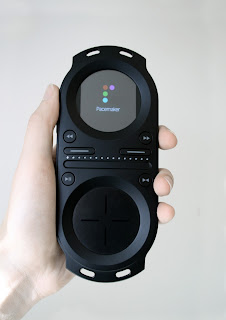Inventions have improved our lives much and have formed our present day world into what it is today. In any case, here and there what was in the arrangements by the creator wasn't the finished result. Here are 10 astonishing innovations made unintentionally
1. Play-doh
Parents everywhere may disagree, but "Play-Doh" was originally invented to be a cleaning product to clean filthy wallpaper. The soft material wasn't selling well as a cleaner and the Kutol products company found out from their customers that children were using it as a toy and creating shapes and other art projects. So Kutol remove the cleaner and added in colors, a clean scent and re-branded the dough as, "Play-Doh." The hit paste became one of the most amazing toys for kids.
2. Velcro
Technically, one could say that a dog had a hand (or a paw) in the invention of Velcro. A Swiss engineer by the name of George de Mestral was on a hunting trip with his dog when he noticed that little burrs kept sticking to his socks as well as to his dog's fur. Ever the curious engineer, Mestral put some of the burrs under a microscope and found that they had tiny hooks to make it easy to stick to soft surfaces. After years of experimenting, Mestral finally used nylon to recreate the Burr effect and the result was named "Velcro".
3. X-rays
It is one of the most commonly used tools for medical diagnosis, and it was invented by pure accident in 1895, a German physicist named, Wilhelm Conrad Rontgen, was experimenting with cathode rays when he saw a black carton containing a discarded discharge tube was illuminating from across the room. When he saw that a thick screen was placed between the fluorescent cardboard and the cathode emitter, he saw that light particles were passing through solid objects. With this radiation, Rontgen found that images could be created through the human body and give the medical world the ability to see it in a brand new light.
4. Scotchgard
While working at 3 am, Patsy O'Connell Sherman and Samuel Smith were working on inventing a rubber material that would withstand exposure to jet engine fuel. While working, some of the substance landed on an assistant's tennis shoe. As they continued working, Sherman noticed the spot stayed clean while the rest of her shoe got dirty. Sherman retraced her footsteps and found an incredible stain-resistant compound that would change the world of cleaning.
5. Plastic
In new york city in 1907, Belgian chemist Leo Baekeland was trying to find a replacement for shellac, which was made from Asian beetle excrement and used in several household items. He entered into the world of synthetics and was trying to create a synthetic resin to strengthen wood. Between the pressure and the temperature of the
phenol and formaldehyde, Baekeland found a strong, moldable material that we named, "bakelite" which was the first thermosetting plastic ever made and became the basis for the plastic we know today.
6. Artificial Sweeteners
This origin story maybe a little disturbing. While working at Johns Hopkins University in 1879, Ira Remsen and Constantine Fahlberg were working in a laboratory handling coal tar. Fahlberg later enjoyed a meal without washing his hands, which could be a deadly mistake for many chemists. He noticed that there was a sweet taste with his food, and realized it was from the coal tar. From there, Fahlberg and Remsen published their discovery, but only Fahlberg patented it, creating some tension between the chemists.
7. Penicillin
In 1928, Sir Alexander Fleming was trying to find a "wonder drug" that would cure all illnesses and diseases. But he found his greatest antibiotic from his discarded experiments. He noticed that in one of his discarded petri dishes, there was a mold inside that dissolved the bacteria. After studying it, he grew the mold by itself and discovered penicillin, one of the most powerful antibiotics.
8. Ink-jet Printer
In 1977, Canon engineer Ichiro Endo was working on trying to extract ink from a nozzle using electricity. However, after leaving a hot iron on the nozzle, endo noticed that the ink shot out of the nozzle like a syringe and realized he had an idea on his hands. The engineer then realized that this was a possible solution to printing needs, and the idea spread like wildfire. He went on to work with John Vaught and his team at Hewlett Packard's corvallis division. Years later in 1988, Hewlett-Packard release the Deskjet ink-jet printer.
9. Microwave
In 1945 while doing research for the Raytheon corporation, Percy L. Spencer was tinkering with a microwave-emitting magnetron (which were used in a Radar arrays). Known to be an electronics genius while serving in the navy in world war one, Spencer was running tests on the device when the chocolate bar in his pocket began to melt. He realized what kind of impact the device had in the food world; he patented a microwave called the "radarange", and the rest is history.
10. The Pacemaker
In a barn in 1958, Wilson Greatbatch was working on a prototype for a heart recorder. Greatbatch was an assistant professor at the University of Buffalo and had lots of parts to work with. As he reached into said box of parts, he thought he grabbed a 10,0000 Ohm resistor, but instead grabbed a 1 mega ohm resistor. The result ended up having the device emits a signal that emulated a heartbeat. In a world where pacemakers were the size of television sets and attached to the patients, Greatbatch realized that he created something that could be made so small that it could be implanted in the patient's chest.
Well, folks, that's our article today. Any of these inventions generally shock you? Let us know in the comments below and while you're here check out another article and please don't forget to share and subscribe our newsletter. Thanks















0 komentar